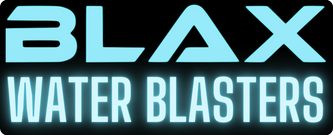Water Blaster Information
Elements of a WATER BLASTER
WATER BLASTERS are known for their incredible cleaning power. This power can be utilised over a wide range of applications from residential, to contractors and heavy industry. Understanding how a pressure washer operates will help determine which one is the best for you.
THREE ACTIVE CLEANING FACTORS
AGITATION
The impact force of pressurised water hitting a surface breaks-up dirt particles and washes them away. In many cases, water and pressure is all that is required, especially for residential use.
NEED MORE CLEANING POWER?
SOAP DETERGENT
If pressurised water isn’t enough to get the job done alone, then adding foam will increase your cleaning power. This is especially true when trying to clean grease or oils. Foams & Detergents will chemically break the bonds between grease and grime allowing them to get flushed away more effectively.
MOST POWERFUL CLEANING
HEAT
Adding heat to your cleaning process is essential for oil and grease clean-up especially in the agriculture industry. Hot water penetrates and melts grease molecules by lowering the water’s surface tension, greatly reducing cleaning time.
(Note: do not run hot water into your pump unless your pressure washer is specifically capable of doing this).
MEASURING THE CLEANING PERFORMANCE
When comparing Water Blasters, it is important to look at how their performance is measured, this will determine the type of unit you require:
PSI (Pounds per Square Inch):
Measures the pressure or force of the water coming out of the tip. Can be viewed as the speed of the water, or the stripping power. This will help determine how powerful the water stream will be.
LPM (Litres per Minute) or GPM (Gallons per Minute):
Measures the volume of water flowing out of the tip. Can be viewed as the weight of water, or the rinsing power. This will help determine how fast you can clean a surface.
Combined together, PSI and LPM dictate the cleaning power of the machine
MECHANICAL COMPONENTS
MOTOR/ENGINE
Spins the Pump
ELECTRIC MOTORS
Runs quietly, minimal maintenance, and zero emissions allowing them to be used indoors.
PETROL ENGINES
Delivers exceptional power and portability.
DRIVE SYSTEM
Connects the engine to the Pump
DIRECT DRIVE
The pump is connected directly to the engine. Compact and cost effective.
BELT DRIVE
Gives the pump a longer life by reducing the heat and vibration from the engine. Used in commercial and industrial applications.
PUMP SYSTEM
Pressurises the Water
AXIAL
Wobble plate system. Direct drive, ideal for many light and medium duty applications.
TRIPLEX
Features a crankshaft and piston system that delivers greater power and longer life. For medium to heavy-duty applications.
UNLOADER SYSTEM
Controls water flow in the pump
BUILT-IN
Most common, very economical
EXTERNAL
Commercial and industrial machines
DELIVERY SYSTEM
HOSE, WAND AND TIPS
It is important to match the accessories to the power of the machine. Always check the ratings on new accessories. If they are incorrect, it could lead to poor performance or become a hazard and cause damage or injury.



